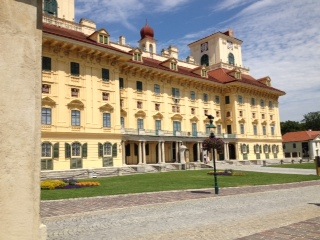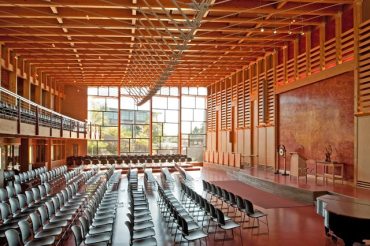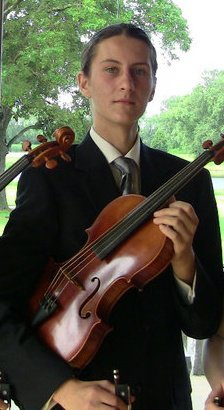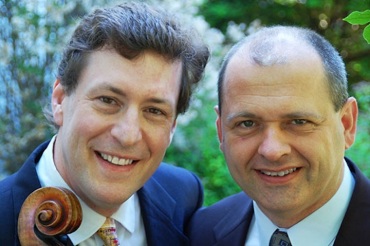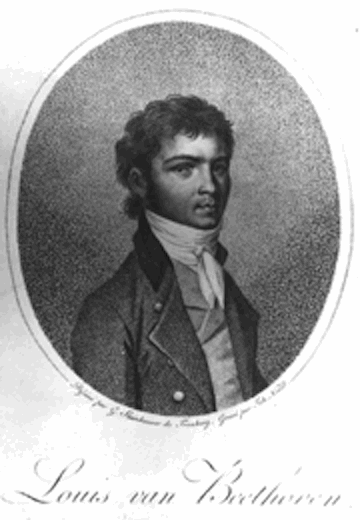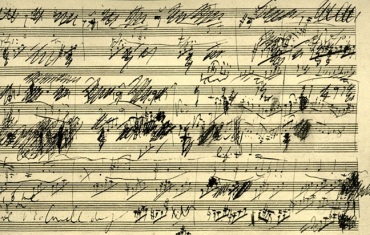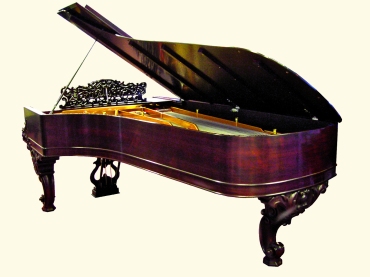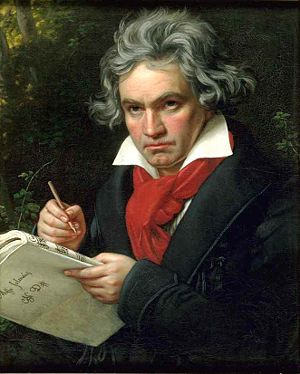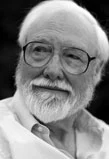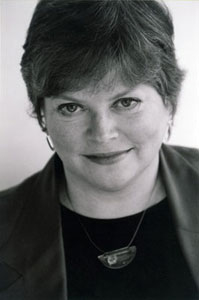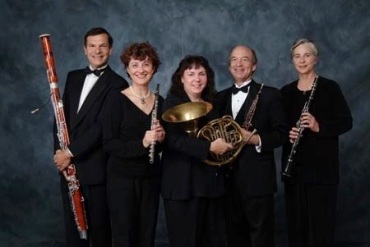The Well-Tempered Ear
Classical music: Sunday is packed at the UW-Madison with lots of vocal music, wind music and contemporary chamber music.
1 Comment
By Jacob Stockinger
The frenetic pace of offering concerts before the spring semester is over in three weeks continues this weekend at the University of Wisconsin-Madison School of Music.
Earlier this week, on Friday, I posted about the Perlman Piano Trio concert that takes place today at 3:30 p.m. in Morphy Hall; and the recital by the three winners of the 28th annual Beethoven Sonata Competition, which takes places on Sunday at 3:30 p.m. in Morphy Hall.
Here are some other appealing events that I just couldn’t fit into the regular postings this past week.
On this Sunday, April 21, at 1 p.m. in Music Hall at the foot of Bascom Hill is the FREE Paul Collins Fellowship Recital. It features guest artists and professional singers soprano Emily Birsan (below top), mezzo-soprano Jamie Van Eyck (below bottom), bass-baritone John Arnold and pianist Kirstin Ihde.
The program will include Ravel’s “’Don Quichotte à Dulcinée”; two Spanish songs from Enrique Granados‘ “Tonadillas”; ‘Songs of Travel‘ by Ralph Vaughan Williams, including “Youth and Love,” “Whither Must I Wander?” and “Bright is the Ring of Words”; Three Russian Songs by Sergei Rachmaninoff (“Midsummer Nights,” “How Fair This Spot” and “Spring Waters”).
Also included are the following opera arias: “Madamina …” and “La ci darem la mano” from Mozart’s “Don Giovanni”; “Non so piu” from Mozart’s “Le Nozze di Figaro”; “Soave sia il vento” from Mozart’s “Cosi fan tutte”; “Ah! forse lui. .. Sempre libera” from Verdi’s “La Traviata”; “Sein wir wieder gut” from Richard Strauss’ “Ariadne auf Naxos”; “Belle Nuit” from Offenbach’s “Tales of Hoffman” and Richard Rodgers’ “People Will Say We’re in Love” from “Oklahoma.”
Here, from the UW School of Music, is a Note about Collins Fellowships: “The Collins fellowships have been established through the generosity of Paul J. Collins (below) in honor of his mother, Adele Stoppenbach Collins, a 1929 School of Music graduate. Student are nominated by faculty members. The fellowships are awarded to outstanding graduate performance majors and are determined by a committee of performance faculty.
“Collins Awards guarantee two years of support at the masters level and three years at the doctoral level, contingent upon full-time study and satisfactory progress in the degree program. These awards are sufficient to provide the financial support needed for a single international student to obtain a visa.”
On Sunday, April 21, at 2 p.m. in Mills Hall is a FREE concert by the UW Wind Ensemble (below) under conductors Scott Teeple, Alex Gonzales and Scott Pierson.
The program will include “Cheers!” by Jack Stamp; “Hemispheres” by Joseph Turrin”; “Duels and Dances” by James Stephenson with UW oboist Marc Fink; and “Symphonic Metamorphosis” by Paul Hindemith, arr. Wilson.
On Sunday, April 21, 7:30 p.m. in Mills Hall in a FREE concert by the Contemporary Chamber Ensemble (below) its director, UW composer Laura Schwendinger.
The program includes “Pas de Quatre” by Eleanor Corey; “The Violinist in My Life” by UW composer Laura Schwendinger (below and at bottom in a YouTube video about a light installation that she did in New york City with her artist sister); a flute quartet by Peter Bacchus; Anton Webern’s Six Bagatelles; and “Sereneta d’ Estate” by George Rochberg.
Tags: aria, Enrique Granados, George Rochberg, Hardware, Jacob Stockinger, Jacques Offenbach, Laura Schwendinger, opera, Ralph Vaughan Williams, Richard Rodgers, Richard Strauss, Sunday, University of Wisconsin-Madison School of Music, Verdi, Wolfgang Amadeus Mozart, YouTube
Classical music Q&A: Do cellist Parry Karp and pianist Eli Kalman have favorite cello sonatas by Beethoven? What should audiences listen for this Friday night and Sunday afternoon? How did the two performers meet and develop their collaboration? Part 2 of 2. Plus, violist Mikko Utevsky gives a FREE recital of J.S. Bach and Shostakovich on Saturday night.
6 Comments
ALERT: Mikko Utevsky — a prize-winning UW student violist as well as sometimes Madison Symphony Orchestra player and the founder-conductor of the Madison Area Youth Chamber Orchestra (MAYCO) — will give a viola recital at Capitol Lakes Retirement Home, 333 West Main Street, off the Capitol Square, at 7 P.M. this SATURDAY (NOT Thursday) night, April 20, and would love for a big audience to attend the FREE concert. The ambitious program includes playing J.S. Bach‘s Cello Suite No. 5, transcribed for viola; Dmitri Shostakovich’s late Viola Sonata; and a Kaddish by Tzvi Avni. Utevsky (below) will be accompanied by pianist John Jeffrey Gibbens. A reception will follow the concert.
By Jacob Stockinger
This weekend brings one of the major and memorable events of the current season: Performances in two parts of the complete original works for cello and piano by Ludwig van Beethoven (1770-1827).
The performances will take place this Friday night at 7:30 p.m. and this Sunday afternoon at 4:30 p.m. (NOT 3:30 p.m. as mistakenly first listed) in the concert hall at Farley’s House of Pianos, 6522 Seybold Road, on Madison’s far west side, near West Towne Mall.
The performers are longtime collaborators: University of Wisconsin-Madison professor of cello and Pro Arte Quartet cellist Parry Karp and UW-Oshkosh professor of piano Eli Kalman, who received his doctoral degree from the UW-Madison School of Music.
Tickets are $25 for each individual concert or $40 for the package of two. For more information call (608) 271-2626, go to Farley’s website. Here is a link:
http://www.farleyspianos.com/pages/events_main.html
Here are the programs for the two concerts:
Friday at 7:30 p.m.: Sonata In C Major, Op. 102 No. 1 (1815); Sonata in F Major, Op. 5 No. 1 (1796); Seven Variations on a theme “Bei Männern, welche Liebe fühlen” from Mozart’s opera, The Magic Flute, WoO 46 (1801); Sonata In D Major, Op. 102 No. 2 (1815)
Sunday at 4:30 p.m.: Twelve Variations on a Theme from Handel’s Oratorio “Judas Maccabeus,” WoO 45 (1796); Sonata In G Minor, Op. 5 No. 2 (1796); Twelve Variations on a theme “Ein Mädchen oder Weibchen” from Mozart’s opera, The Magic Flute, Op. 66 (1798); Sonata in A Major, Op. 69 (1807-8)
Both Parry Karp (below left) and pianist Eli Kalman (below right) agreed to answer a wide-ranging email Q&A. This is the second of two parts. The first part was posted yesterday and covered the evolution and development of Beethoven writing for the cello and piano throughout his career.
Do you both have favorite works among Beethoven’s sonatas for cello and piano? Which ones and why?
Parry Karp: It sounds like a cliché, but whatever work I am playing at the moment is my favorite. A week and a half ago Eli and I played three of the works for the Music in Performance class at the University of Wisconsin-Madison.
We played an early sonata, a sets of variations and a late sonata. We were both struck by how completely different each work was and how magnificent they all were. The range is extraordinary. As my father (retired UW pianist Howard Karp) is fond of saying about Beethoven (below is a print of the young Beethoven): “He was great from the beginning, he just kept changing.” Probably the first Cello Sonata is the least performed, but when you are performing it, it is an overwhelming experience.
Eli Kalman: The one you are playing has always to sound like your favorite -– that is so true. But personally, I have a very strong connection to the fourth sonata, Op. 102, No. 1 (at bottom, in a YouTube video), and I am happy to overlook the words for the reasoning. I could advocate for any sonata as for the first favorite in a rational manner, but I choose to go with my strongest emotional reaction regarding the fourth sonata.
What would you like audiences to listen for or hear in your performances of these works? Are there neglected works you would especially like people to pay attention to?
Parry Karp: In general, I don’t like to tell audiences what to listen for in performances. I think these works can be enjoyed and understood in many different ways and on many different levels. In fact every time I play, listen or study them I find new things.
However the works do demand intense concentration from the listener as well as the performer! This music doesn’t work as background music.
In addition to the sonatas, we are performing the three sets of variations that Beethoven wrote for piano and cello. The variation form is one that also held interest for Beethoven from early in his compositional career right through to the huge “33 Variations on a Theme of Diabelli” at the end. He was a master at writing variations and these three sets show that well. (Below is a manuscript sketch of Beethoven’s most popular Cello Sonata, Op. 69.)
Eli Kalman: It is fascinating to follow the composer’s mind at work along with the musically beautiful of many sorts. Instrumental musical treatment is usually of abstract nature but can turn also operatic at times. The singing and the interplay are worth listening to and the passion and the dedication with which the potential of the duo unfolds.
The collaboration is complex, exciting and never really predictable. It is like a mountain of piano sound and one happy hiker — the cello climbing towards the highest peak.
You have played together a lot. Can you recall first getting together and tell us what makes your partnership – or any partnership — so successful?
Parry Karp: I first met Eli Kalman through a door! I walked by a studio and heard a pianist practicing Schumann’s Piano Sonata in F-sharp minor, a work rarely heard. I knocked on the door to find out who this excellent pianist was, and it was Eli.
It turned out he was in Madison auditioning for the graduate program in Collaborative Piano. He arrived in Madison the following fall in the graduate program and had an immediate impact on our string program.
He was very generously making it possibly for all of our advanced string students to perform the great piano-string duo repertoire of Mozart, Beethoven, Schumann, Brahms, Respighi, Bartok, Rachmaninoff, etc.
After a year Eli asked if we could do some playing together. I was only too happy to oblige. We have been performing together since that time, some 11 years. We have explored both much of the well-known repertoire as well as many works that we consider unjustly neglected works. It is always a great treat to have Eli as a duo partner.
Eli Kalman: Parry was the most inspiring musical figure of my last musical decade starting from his own recitals in which he was never letting go easily of any note and all the way to the his insatiable appetite for music. I never met somebody hanging on with so much passion to every measure — quite a model to follow!
How did we start? As a student, I told him once about my dream of including Rachmaninoff’s cello sonata and Ravel piano trio in my repertoire and he commented warmly: “You had a dream, let’s make this happen” – and this is how it started. Ten years later, we have shared so many wonderful and often challenging stage experiences in which we stay together serving music the best we can and continue to marvel about its powers.
Is there anything else you would like to say or add?
Parry Karp: We are very excited to be performing these seminal works at Farley’s House of Pianos, a beautiful intimate space, and a perfect environment for hearing these pieces. Eli and I rehearsed there yesterday and it was a wonderful treat.
There was a plethora of great pianos to chose from, “an embarrassment of riches” as it were. We picked an 1877 “Centennial” Steinway Concert Grand (below), lovingly and magnificently rebuilt by Farley’s. It seemed perfect for these two upcoming recitals.
Eli Kalman: One is fortunate if the repertoire, the partner and the concert series are special. In this case, Farley’s unique restoration of this piano is a significant addition to other aspects. Performing Beethoven’s complete cycle of piano and cello works is one of the most exciting moments of my musical life. We are looking forward to it very much!
Tags: Beethoven, Cello, Cello Sonata, Cello Suite, Dmitri Shostakovich, Eli Kalman, J.S. Bach, Jacob Stockinger, Ludwig van Beethoven, Madison, Madison Symphony Orchestra, Magic Flute, Parry Karp, Piano sonata, Pro Arte Quartet, University of Wisconsin–Madison, Viola, West Towne Mall, YouTube
Classical music Q&A: Do Beethoven’s sonatas for cello and piano evolve, and how important are they in the overall cello repertoire? Cellist Parry Karp and pianist Eli Kalman discuss their upcoming performances on Friday night and Sunday afternoon at Farley’s House of Pianos of Beethoven’s complete music for piano and cello. Part 1 of 2.
4 Comments
By Jacob Stockinger
This weekend brings one of the major and memorable events of the current season: Performances in two parts of the complete original works for cello and piano by Ludwig van Beethoven (1770-1827).
The performances will take place this Friday night at 7:30 p.m. and this Sunday afternoon at 4:30 p.m. (NOT 3:30 as mistakenly first announced) in the concert hall (below) at Farley’s House of Pianos, 6522 Seybold Road, on Madison’s far west side, near West Towne Mall.
The performers are longtime collaborators: University of Wisconsin-Madison professor of cello and Pro Arte Quartet cellist Parry Karp and UW-Oshkosh professor of piano Eli Kalman, who received his doctoral degree from the UW-Madison School of Music.
Tickets are $25 for each individual concert or $40 for the package of two. For more information call (608) 271-2626, go to Farley’s website. Here is a link:
http://www.farleyspianos.com/pages/events_main.html
Here are the programs for the two concerts:
Friday at 7:30 p.m.: Sonata In C Major, Op. 102 No. 1 (1815); Sonata in F Major, Op. 5 No. 1 (1796); Seven Variations on a theme “Bei Männern, welche Liebe fühlen” from Mozart‘s opera, The Magic Flute, WoO 46 (1801); Sonata In D Major, Op. 102 No. 2 (1815)
Sunday at 4:30 p.m.: Twelve Variations on a Theme from Handel’s Oratorio “Judas Maccabeus,” WoO 45 (1796); Sonata In G Minor, Op. 5 No. 2 (1796); Twelve Variations on a theme “Ein Mädchen oder Weibchen” from Mozart’s opera, The Magic Flute, Op. 66 (1798); Sonata in A Major, Op. 69 (1807-8)
Both Parry Karp (below left) and pianist Eli Kalman (below right) agreed to answer a wide-ranging email Q&A. Their responses will run in two parts today and tomorrow. Today is Part 1:
Where would you place the Beethoven cello sonatas and his other works in the overall cello repertoire? What makes them challenging individually and as a whole?
Parry Karp: The Beethoven Cello Sonatas are amongst the most important works in the cello-piano duo repertoire. These are seminal works, in that up until the time that Beethoven wrote the first two Sonatas, Op. 5, there had really never been works written for this combination of instruments in which both instruments had important music to play and were equal partners.
Before that, the duos for cello and keyboard had the cello performing the important music and the keyboard part was basically accompanying. However, Beethoven changed that for good with his generous duo compositions for piano and cello. While there was a wonderful precedence for duo repertoire by Mozart for keyboard and violin (well over 30 compositions) Mozart managed only 11 measures of a Sonata for piano and cello and then stopped!
Because there wasn’t a history of duo sonatas for piano and cello, I think Beethoven (below) felt freer to experiment when he wrote the Cello Sonatas. He wrote them throughout his entire career and with the exception of the great A Major Sonata, Op. 69, they are revolutionary works.
The first two Sonatas of Op. 5 were written in 1796 when Beethoven was a brilliant young performing pianist and composer. These two Sonatas were written for the only “concert tour” Beethoven ever took. They are dedicated to King Frederick of Prussia who gave Beethoven a gold snuff box for his efforts. The form of these early Sonatas is very unusual. Both of them are in two movements, and the first movements have very lengthy slow introductions.
As far as I know, no sonata allegro movement written up until these two Op. 5 Sonatas had a slow introduction that approaches the size and emotional scope of the ones found in these works. Also, the first movements of these two Sonatas are a bigger canvas than the first movement of any Haydn or Mozart Symphony, or previous work written by Beethoven up to this time.
The late Op. 102 Cello Sonatas are virtually the only works that he wrote in 1815 and are basically the first works completely in his “late style.” If you know and love the five late Beethoven Piano Sonatas and haven’t heard these late Cello Sonatas, you are in for a treat getting to know them. The Op. 102 Cello Sonatas were actually written just before the Op. 101 Piano Sonata.
Most striking for me is how the relatively smaller Op. 102, No. 2, Cello Sonata seems to lead to the great and grand-scale “Hammerklavier” Piano Sonata, Op 106. Both works have incredibly profound and personal slow movements that lead into wild and thrilling last movement fugues; and there are even motivic similarities between the two works. It is as if Beethoven experimented with these new ideas initially with his new ensemble (the piano-cello duo) and then went to town with these ideas and expanded them in the Op. 106 Piano Sonata.
These works, as a whole, inspired composers from this time forward to the possibilities of writing outstanding works for this duo combination and the influence was immediate; both Mendelssohn and Hummel wrote Cello Sonatas that are strongly influenced by Beethoven’s Op. 69 Sonata. This influence has continued to the present day.
Eli Kalman: It is in some way confusing that although the cello and piano repertoire starts with Beethoven, the complete cycle of these works makes it sound more like the genre starts and ends at the same time. Playing all the works grants a sense of totality and the gratification of a complete journey.
The confusion is only enhanced by the unusual shapes and ideas of the early sonatas because of the formal eccentricity and the variety of what Beethoven deliberately planned to sound fresh and “unpredictable.
How does the writing for the two parts – cello and piano – evolve separately and together from the first works to the last? Do the cello works show the same kind of musical and spiritual development as, say, the piano sonatas and string quartets?
Parry Karp: The works do evolve in a similar way to the piano sonatas and string quartets, but I am not sure they get better. The early works are amazing and compelling on an ultimate scale.
Eli Kalman: If the fugue of the last sonata would not contradict my statement, I would be comfortable saying that the composer moves each sonata towards the idea of “less is more” in the way he treats the piano writing. The later works prefer lesser notes and more transparency serving a very different affect.
Moving away from great classical principles of Op. 69 (the first movement is performed by pianist Glenn Gould and cellist Leonard Rose in a popular YouTube video), which is the ultimate expression of duo-sonata “perfection,” must have felt like a compositional necessity. Beethoven defines an unmatched and new type of musical sophistication.
Tomorrow: Do the performers have favorite cello sonatas by Beethoven? What should audiences listen for? How did the performers first get together?
Classical music: The Wisconsin Chamber Choir unveils Robert Gehrenbeck’s own version of Mozart’s Requiem in a impressive concert that showed the links between Bach and Mozart.
Leave a Comment
By Jacob Stockinger
Here is a special posting, a review written by frequent guest critic and writer for this blog, John W. Barker. Barker (below) is an emeritus professor of Medieval history at the University of Wisconsin-Madison. He also is a well-known classical music critic who writes for Isthmus and the American Record Guide, and who hosts an early music show every other Sunday morning on WORT 88.9 FM. He serves on the Board of Advisors for the Madison Early Music Festival and frequently gives pre-concert lectures in Madison.
By John W. Barker
Conductor and director Robert Gehrenbeck’s annual April concerts with his Wisconsin Chamber Choir (below) have come to be important events on our musical scene, and his latest one, held at Luther Memorial Church on Saturday night, set new standards of enterprise.
The essential point of the program was to observe the impact of music by Johann Sebastian Bach on Wolfgang Amadeus Mozart’s creativity, as illustrated in works composed in the final months of the latter’s foreshortened life.
After a prologue of Mozart’s late motet, “Ave verum corpus,” we were given Bach’s glorious motet, “Jesu, meine Freude” to represent music that Mozart discovered among the works by the Leipzig master.
The first half ended with a march and the trial-by-fire scene from Act II of The Magic Flute. Then, after the intermission, came the pièce de résistance, Mozart’s great Requiem.
For the program’s first half, Gehrenbeck (below) limited himself to his own group, the Madison-based Wisconsin Chamber Choir, which is 48 members strong.
Scholars and musicians argue over how to treat this particular chorale-motet masterpiece — whether all of its 11 sections should be for full choir, or whether it should be done with a single singer per part, or whether some of its sections might be reserved for a consort of soloists.
While Gehrenbeck chose to give one section to a very tiny mini-chorus of eight singers, he opted otherwise for full five-part chorus throughout. Though the work comes to us as an a cappella piece, it is thought that instrument doublings were used by Bach (below).
Gehrenbeck avoided that approach, but he added a basso seguente, a doubling of the bass line by cello and organ, that was really not necessary musically, though it probably helped the singers on pitch.
Given the church’s acoustics, different parts of the very large sold-out audience received a varied choral sound, somewhat blended at the rear but still quite clear where I sat, up front, and given a beautiful glow in a careful but very satisfying performance
The March of the Priests and then the “Armed Men” scene, both from Mozart’s last opera, are full of spiritual and Masonic meaning. Here Gehrenbeck drew not only on some young solo singers, but also a small orchestra of 22 seasoned local players. While some parallels with Bach might be traced in these excerpts, the real influence for such material, not properly recognized, was Gluck (below). (Mozart never used trombones in his operas, save when he was drawing inspiration from Gluck’s techniques for solemn and ceremonial music.)
For the second half, devoted to the Requiem, Gehrenbeck added to the scene the 31 members of the Chamber Singers (below) of his home base, University of Wisconsin-Whitewater. He did, at least at one point, pare things down to his smaller local group, but otherwise he took the opportunity to create a very full and ample choral sound.
To be sure, his tempos were judiciously cautious, designed so as not to push the pulses or strain the total bulk, but there was fine discipline throughout.
The conductor produced some subtle nuances along the way. I particularly appreciated his clever pattern of decrescendo-to-crescendo on the repetitions of the words “quam olim Abrahae” in the Offertory.
Instead of having a single vocal quartet, Gehrenbeck used constantly changing groups of singers drawn mainly from the choir ranks. This gave rotating opportunities to lots of singers, some of them really good–I want to hear more of contralto Sarah Leuwerke–though at the price of constant parading of bodies on and off of the scene.
This performance had some very special qualities, however. An acknowledged and beloved masterpiece, Mozart’s Requiem nevertheless has textual problems that keep generation after generation of musicologists and editors in business. (Below is a manuscript of the Dies Irae from Mozart’s Requiem with annotations by Joseph Eybler).
Mozart died before he could complete this last score, as is well known. His widow, desperate to have it finished to win the needed fee, first tried to have one Mozart student, Joseph Eybler, complete the work, but he soon pulled out, and her second choice was a lesser student, Franz Xaver Süssmayer, who carried out the task. (Below is an etching of Sussmayer at Mozart’s death bed.)
Süssmayer’s version of the score long stood as its “standard” performing version, but in recent decades editors have been seeking ways to overcome its weaknesses and get closer to what Mozart himself would have done.
Thus, Franz Beyer has cleaned up the orchestration, and has added notes to the end of the “Hosanna” refrains to the Sanctus and Benedictus which bring Süssmayer’s abrupt conclusions more into line with Mozartean style. Other editors have gone much further into rewriting what are understood to be just Süssmayer’s own contributions.
Robert Gehrenbeck (below, conducting) has now entered these lists on his own merits. He has basically used the Beyer edition, but replaced the wind and timpani parts in the Dies irae with those that Eybler had originally proposed. Gehrenbeck has also interpolated a short passage in the Benedictus to allow for an appropriate change of key.
In all these respects, Gehrenbeck’s educated guesses are as good as anybody else’s. In this uniquely personal collation, he has created a fully plausible text for a fully convincing performance.
What a refreshing, thought-provoking, and inspiring concert! Remember, Madisonians, how lucky we are.
video
Classical music: Conductor Beverly Taylor and the Madison Symphony Chorus invite singers of all levels to an open sing of Carl Orff’s oratorio “Carmina Burana”
1 Comment
By Jacob Stockinger
Conductor Beverly Taylor (below, the choral director at the UW-Madison and assistant conductor of the Madison Symphony Orchestra) and the Madison Symphony Chorus invite SINGERS OF ALL LEVELS to sing Carl Orff’s famously dramatic and popular modern oratorio “Carmina Burana” (the well-known opening, based on Medieval songs and texts) is at the bottom in a YouTube video that has more than 10 million hits) at a community open sing on this April 16.
This is an opportunity for singers to have fun performing one of the most iconic works written for chorus; audiences have heard parts of it in many commercials over the years. (Below is a photo of composer Carl Orff.)
Anyone who has a little choral singing experience can come to the Wisconsin Studio (below, in a photo by Del Brown) at Overture Center for the Arts at 201 State Street on Tuesday, April 16 from 7:30 to 9:30 p.m.
Music scores will be provided, and soloists from the University of Wisconsin-Madison School of Music will join in the celebration.
New voices are always welcome in the Madison Symphony Chorus, and the community open sings are an ideal time to see how it feels to sing with the chorus that performs with the Madison Symphony Orchestra in Overture Hall each season.
Those with questions can contact Dan Lyons at daniel.lyons1908@gmail.com
Classical music: Eclectic superstar cellist Yo-Yo Ma says that culture and the arts are vital to our society and to education and he has Three Big Ideas about what we can do to help the in America.
Leave a Comment
By Jacob Stockinger
Classical music organizations of all kinds are wondering what they can do to foster a better appreciation of the arts and to put the performing arts on a more solid financial footing with broader public and political acceptance.
Famed cellist Yo-Yo Ma (below top), who, in addition to his world-wide career as a recitalist, chamber musician and concerto soloist, has also been a creative consultant to the Chicago Symphony Orchestra and who has performed with the eclectic Silk Road Ensemble (below bottom), thinks he has the answer.
At bottom is a YouTube video of Ma playing a movement of a solo cello suite by J.S. Bach that has had almost 10 million hits:
And the Harvard-educated Ma, who describes himself as a “venture culturalist” revealed his view about the need for diversity and his Three Big Ideas recently in the Nancy Hank Lecture on Arts Advocacy Day in the nation’s capital, Washington, D.C. He linked and emphasized the role of the arts in all education and in economic development.
And as always, NPR’s outstanding classical music blog “Deceptive Cadence” was on top of the story.
Here is a link with a story and a video of the complete speech. Spread the word and share it — his remarks deserve it:
http://www.npr.org/blogs/deceptivecadence/2013/04/09/176681242/can-yo-yo-ma-fix-the-arts
Be sure to read some of the readers’ comments, which I find most enlightening –- especially the story about and quote by Winston Churchill.
Classical music: If you missed radio host Rich Samuels’ outstanding local tribute to J.S. Bach’s 328th birthday, you can now listen to the Madison performers on his website. Plus, he will record the FREE concert this Saturday at noon by the wind quintet Black Marigold.
2 Comments
By Jacob Stockinger
Some weeks ago, in mid-March, radio host Rich Samuels spent two of the three hours of his 5 a.m. to 8 a.m. Thursday show “Anything Goes” on WORT (89.9 FM) doing a birthday tribute to Johann Sebastian Bach (below). It was broadcast on the air and also streamed via the Internet and WORT’s home website.
Samuels, an amiable and discerning transplanted Chicago journalist and broadcaster, went around to various local players and recorded performances of Bach as well as brief interviews that asked the performers to discuss Bach.
Here is a link to my major mention and preview of it:
It was a perfect substitute for the much liked Bach Around the Clock celebration of The Master’s 328th birthday that Wisconsin Public Radio cancelled (a poster for the last one is below) after its music director Cheryl Dring left for Texas.
At the time, Samuels promised that he would work to post the local performances on his website.
And now he has made good on that promise.
Here is a link along with a message from Samuels:
“Audio of the specially recorded Bach birthday segments from my March 21st WORT show are now on my website at
“Featured in the performances are Rachel Eve Holmes, Kostas Tiliakos, Thomas Kasdorf, Bruce Bengston, Trevor Stephenson (below top), Karlos Moser, Renee Farley, Tim Farley, Shannon Farley, Greg Punswick, Kathy Otterson (below bottom), Cindy Whip, Michael Keller, Tim Adrianson, Dennis Simonson and Pete Ross.
“Thanks again for your mentioning this effort, which encouraged the ensuing performances.
“My next recording effort will be of the FREE concert by Black Marigold (below) this Saturday at noon at Grace Episcopal Church on Capital Square. Just to be clear: I’ll be acquiring a recording of Saturday’s Black Marigold concert, not making my own. I’m not certain when that will air.”
Tags: Bach, Capital Square, Chicago, Johann Sebastian Bach, Texas, wisconsin public radio, WORT, WORT FM
Classical music: Let us now praise UW-Madison oboist Marc Fink – and show up to say good-bye and thank you to him by attending a terrifically varied FREE concert by him and his colleague friends on Sunday afternoon.
1 Comment
By Jacob Stockinger
It would be hard to name a faculty member at the University of Wisconsin-Madison School of Music who has served his students and his art better than oboist Marc Fink (below).
Fink has been on the faculty for 40 years. His students sit in principal chairs of orchestras and chamber music groups, in studios and classrooms, all around the country and the world. And talk about melding clarity with beautiful tone: Just listen to the recent YouTube video at the bottom of Fink rehearsing Mozart’s gorgeous Oboe Concerto with the UW Chamber Orchestra under James Smith.
Marc Fink, who is also a member of the Wingra Woodwind Quintet and the principal oboist of the Madison Symphony Orchestra, has had an international career, and has the CDs of Russian music he discovered to show it.
All the more reason, then, to celebrate Marc Fink’s retirement. He has surely earned it.
On this coming Sunday afternoon at 2 p.m. in Mills Hall, Fink will give his last faculty recital – admission is, as always, FREE and OPEN TO THE PUBLIC — with friends and colleagues. We should all show up en masse and pack Mills Hall.
After the concert – called “A Few of My Favorite Things” — there is a special retirement dinner in Marc Fink’s honor. What a terrific combination to go out on, no?
Here is a link to an earlier post I did about Fink’s retirement and post-retirement plans, and his local “farewell” tour that included a chemistry lab (below) to show his support for linking the arts and sciences:
Here is the appealing program for Sunday’s concert: “Pan” (from Six Metamorphoses after Ovid, Op. 49) by Benjamin Britten (1913-1976); arias by Johann Sebastian Bach (1685-1750) including “Ich Habe Genug” (from Cantata 82) and “Sich üben im Lieben” (from Cantata 202) with baritone Paul Rowe; soprano Mimmi Fulmer; Suzanne Beia, violin; Alice Bartsch, violin; Katrin Talbot, viola; Parry Karp, violoncello; and Bruce Bengtson, organ.
Also included on the program are the Quartet in F, KV 370 (368b) by Wolfgang Amadeus Mozart (1756-1791) with Suzanne Beia, violin; Katrin Talbot, viola; and Parry Karp, violoncello; “Variations on the theme ‘Là ci darem la mano’ by Ludwig van Beethoven (1770-1827) from Mozart’s opera “Don Giovanni”) with Andrea Gross Hixon, oboe; Kostas Tiliakos, English horn.
But the concert still isn’t over: Add in “Three Folksongs from the County of Csík” by Bela Bartok (1881-1945), arranged by Tibor Szeszler; Sonata for Oboe and Piano (1962) by Francis Poulenc (1899-1963); and the “Romance” from the “Snowstorm Suite” Gyorgy Sviridov (1915-1998), arranged for oboe and piano by Victor Gorodinsky, with Todd Welbourne, piano.
The Ear loves it all, but especially the Bach, the Mozart, the Bartok and the Poulenc.
Gee, do you think this is a man and a musician who loves to perform and to share his art?
The audience is invited to a reception honoring Marc Fink in his retirement immediately following the recital in the Mills Hall lobby.
And don’t forget to leave your tributes to Marc Fink in the COMMENTS section of this blog.
The Ear suspects there are a lot of stories and a lot of affection for this world-class musician as performer and teacher.
And The Ear wants to hear about all of it.



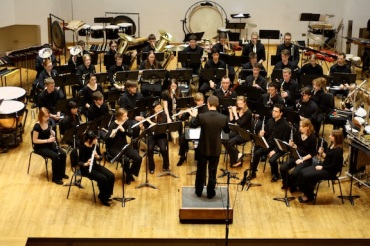
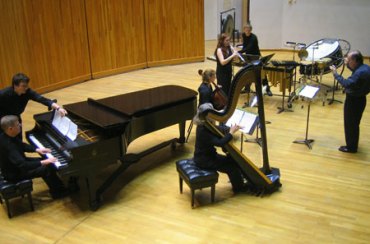

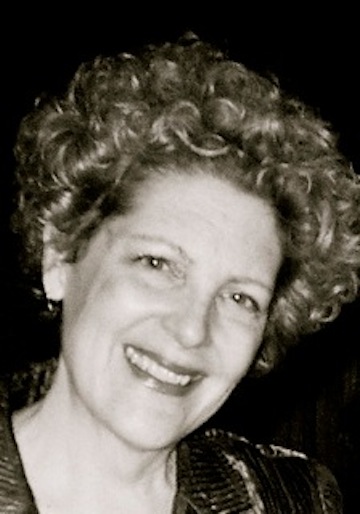

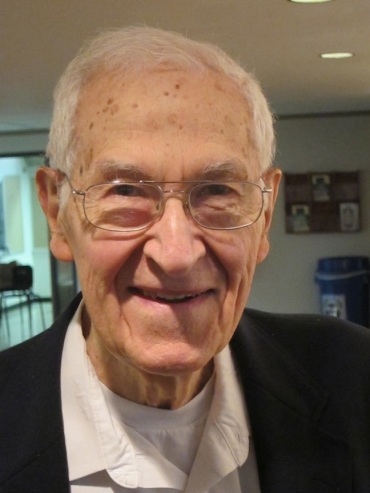


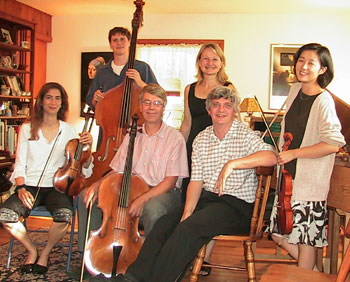
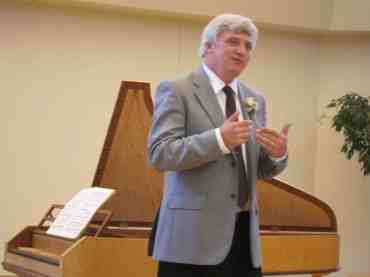
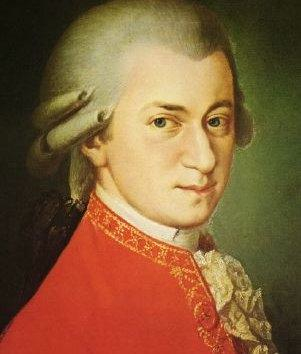
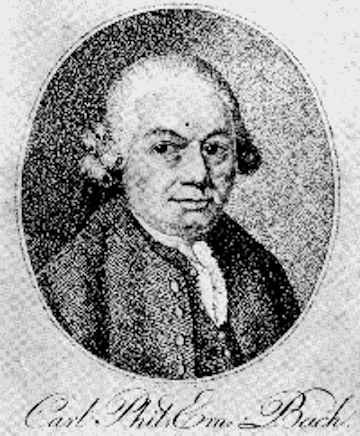
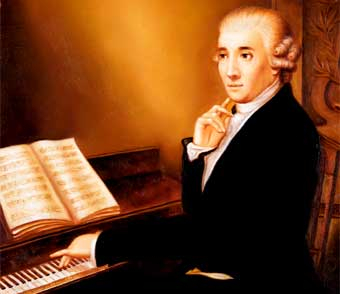
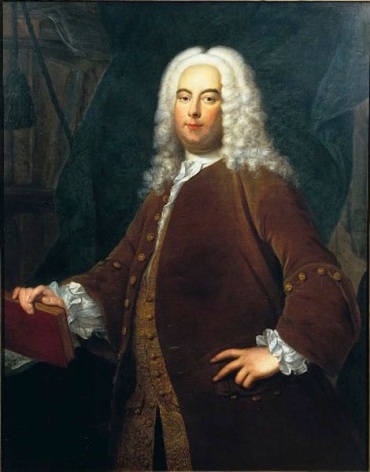

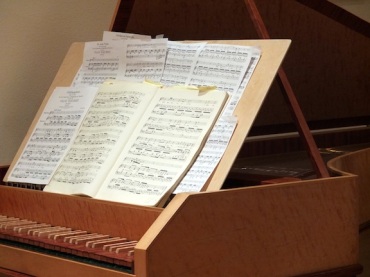
![Marc Vallon 2011 James Gill (baroque & modern)[2]](https://welltempered.files.wordpress.com/2012/03/marc-vallon-2011-james-gill-baroque-modern2.jpg?w=370&h=557)
